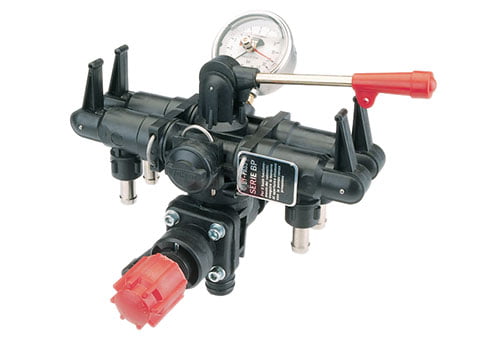How Control Valves Effect Energy Performance in Industrial Settings

Maximize Power Cost Savings and Comfort With Advanced Structure Automation Controls
In the realm of modern style and center administration, the combination of advanced structure automation regulates stands as a critical innovation. By taking advantage of the power of automation, buildings can adjust, respond, and progress in ways that were as soon as inconceivable.
Energy Performance Conveniences
Energy efficiency benefits can dramatically reduce energy consumption and operational costs in buildings. By applying energy-efficient practices and technologies, building owners and operators can achieve considerable savings while additionally adding to environmental sustainability. One of the primary benefits of improving power efficiency in buildings is the reduction of energy expenses. Energy-efficient systems, such as advanced building automation controls, can enhance using sources like air conditioning, heating, and lighting, causing reduced energy expenses gradually.
Additionally, boosted energy efficiency can extend the life-span of structure devices and systems. By operating much more efficiently, HVAC systems, lighting components, and other building parts experience less wear and tear, resulting in lowered upkeep and substitute costs. Furthermore, energy-efficient buildings typically command greater residential or commercial property values and rental prices, providing long-term monetary advantages to owners.
Furthermore, power effectiveness can improve occupant comfort and efficiency. Properly controlled interior environments with optimal illumination and thermal problems develop an even more conducive and pleasant office, resulting in boosted worker contentment and performance. Generally, the power effectiveness advantages connected with innovative building automation controls are multifaceted, incorporating price savings, environmental stewardship, and resident wellness.
Improved Comfort Control
Enhancing comfort control in building atmospheres requires an advanced combination of innovative automation systems for optimal owner well-being. By making use of advanced building automation controls, centers can customize the indoor environment to fulfill the specific needs and preferences of passengers. control valves.
Enhanced convenience control surpasses standard temperature level modifications. It consists of features such as individualized setups, occupancy sensing units, and all-natural light usage to produce a vibrant and responsive environment. By integrating these innovative controls, structures can not only improve comfort but also enhance energy efficiency by maximizing system operations based on actual occupancy and use patterns. Inevitably, prioritizing passenger convenience with advanced automation systems causes a much more satisfying and much healthier interior atmosphere.
Operational Effectiveness Improvements

In addition, the implementation of real-time monitoring and analytics devices enables building drivers to identify power ineffectiveness and operational abnormalities without delay. By continuously keeping track of power usage patterns and system efficiency metrics, adjustments can be made in real-time to optimize power consumption and ensure peak functional performance. control valves. Furthermore, incorporating need response strategies right into building automation controls can additionally enhance this functional efficiency by dynamically changing energy use based upon grid problems and pricing signals
Indoor Environment Optimization
Effective indoor environment optimization is a basic element of building automation controls, making sure owners' comfort and well-being while taking full advantage of power financial savings. By using innovative sensors and controls, developing automation systems can continuously keep track of and readjust temperature, moisture degrees, air high quality, and ventilation to develop an optimal interior setting. Maintaining comfortable and constant conditions not only boosts occupant contentment however likewise improves performance and overall well-being.
Interior climate optimization also plays a critical role in energy performance. By fine-tuning heating, air flow, and cooling systems based upon real-time data and tenancy patterns, building automation controls can substantially lower energy usage - control valves. As an example, applying methods such as demand-controlled ventilation and thermal zoning can help minimize power waste while making sure that each location of the structure obtains the required conditioning.

Sustainable Setting Production
Building automation regulates not just optimize indoor climate conditions for power efficiency and passenger convenience but also lay the foundation for developing a sustainable environment through critical monitoring of sources and systems. By incorporating innovative building automation innovations, such as sensing units, actuators, and smart software program, facilities can readjust and keep track of energy usage in real-time to lessen waste and minimize their carbon impact. These systems allow anticipating maintenance, identifying prospective problems before they rise and maximizing tools efficiency to improve durability and efficiency.
Furthermore, lasting setting production prolongs past energy management to include water preservation, waste decrease, and interior article source air high quality enhancement. Structure automation controls can manage water use, spot leakages, and make sure appropriate waste disposal methods, adding to overall sustainability initiatives. Furthermore, by regulating and keeping an eye on air flow and filtering systems, these technologies improve passenger health and wellness and performance while lowering power intake associated with a/c operations.
Conclusion
To conclude, progressed structure automation regulates deal considerable benefits in terms of energy cost savings, convenience control, functional performance, interior environment optimization, and producing a lasting setting. By carrying out these controls, structures can accomplish optimal performance while minimizing energy usage and improving occupant comfort. It appears that using sophisticated automation modern technology is crucial in boosting building efficiency and developing an extra lasting future.
Power performance benefits can considerably decrease energy usage and functional expenses in structures. In general, the power efficiency benefits linked with sophisticated building automation controls are multifaceted, incorporating price savings, ecological stewardship, and resident well-being.
Additionally, integrating need reaction strategies into structure automation controls can further boost functional performance by dynamically adjusting power usage based on grid conditions and pricing signals.
Structure automation controls not just enhance interior climate conditions for energy performance and resident convenience yet likewise lay the structure for creating a sustainable atmosphere through calculated management of sources and systems.In verdict, progressed building automation regulates deal significant benefits in terms of power savings, comfort control, functional efficiency, interior climate optimization, and producing a lasting setting.